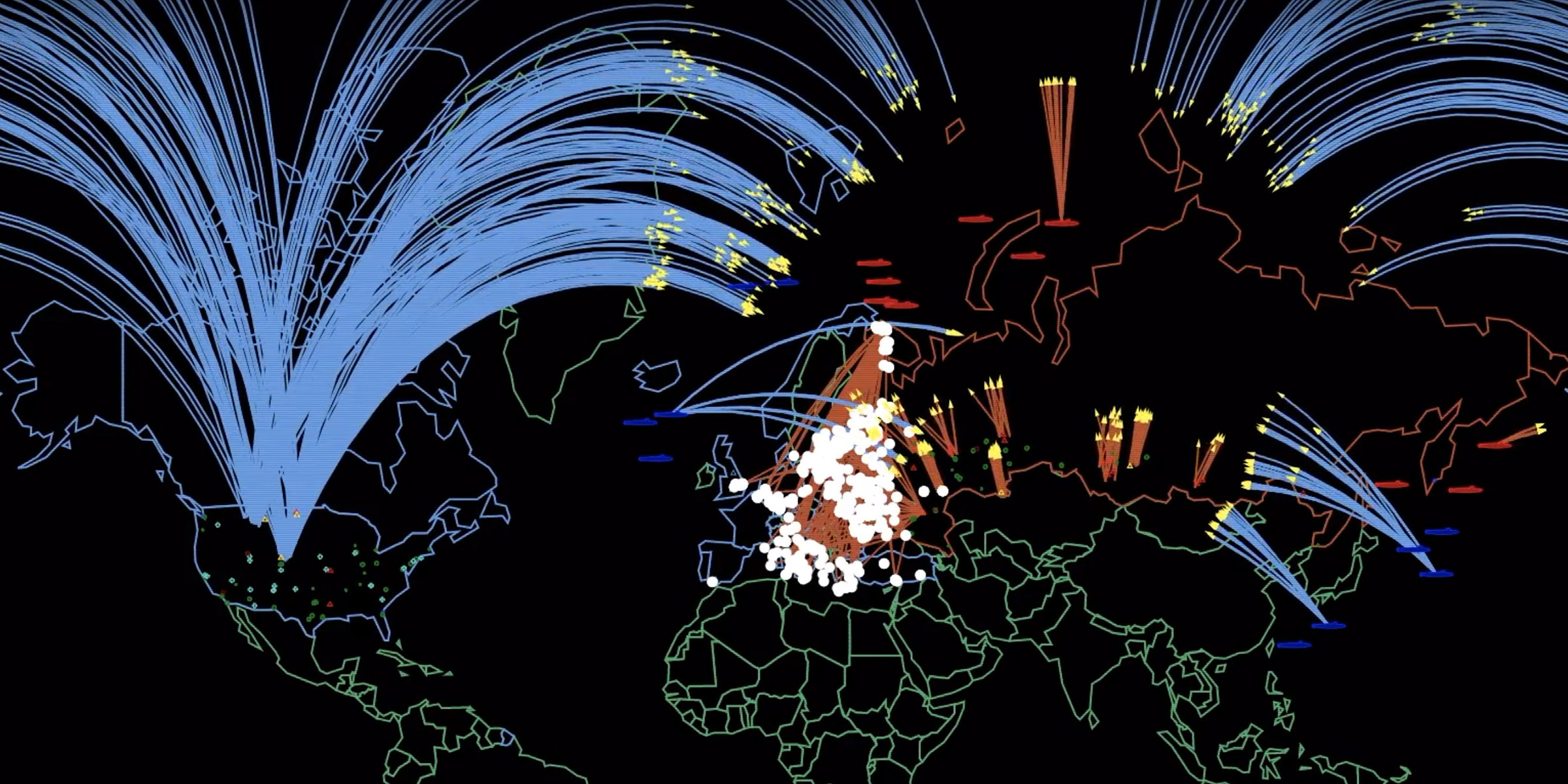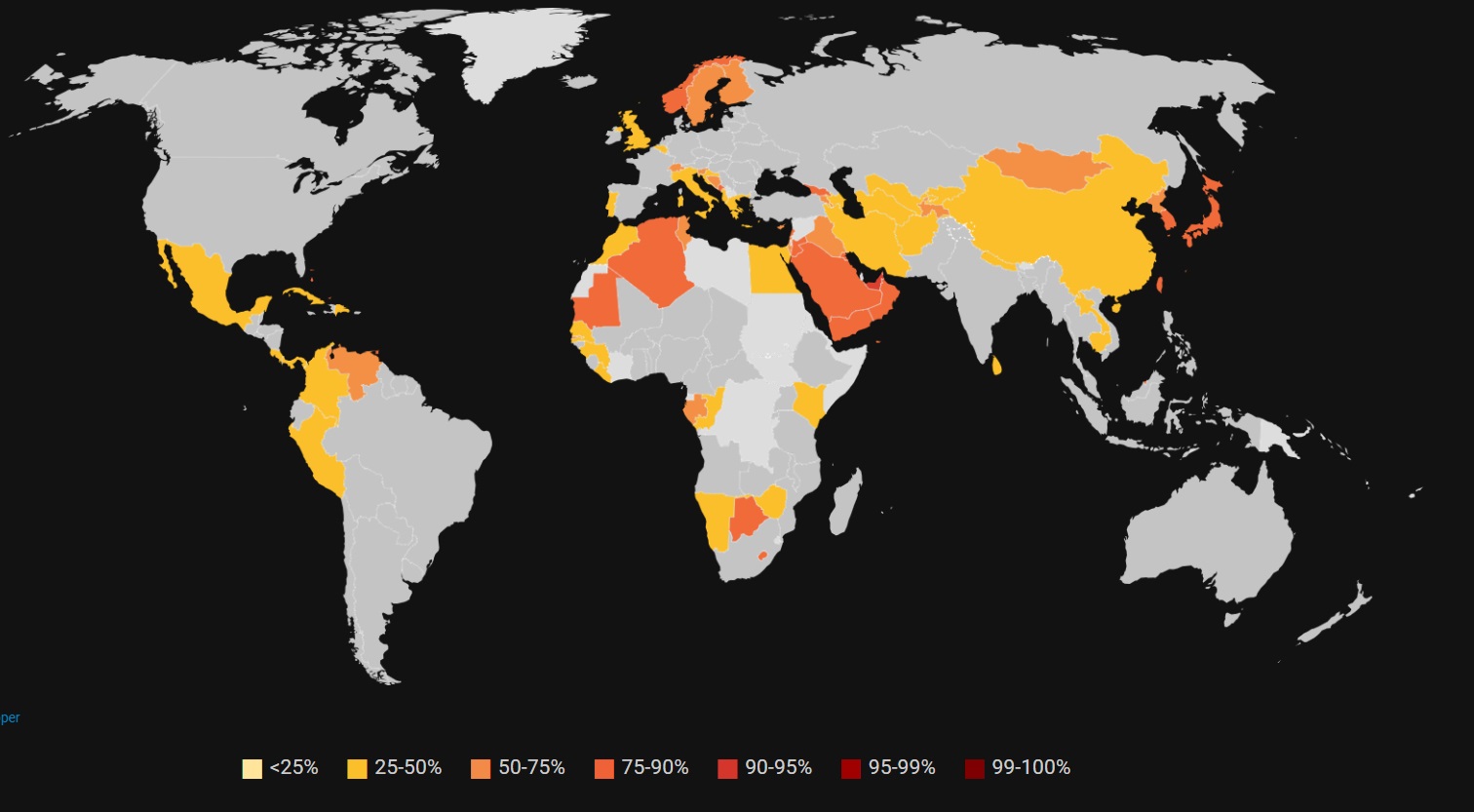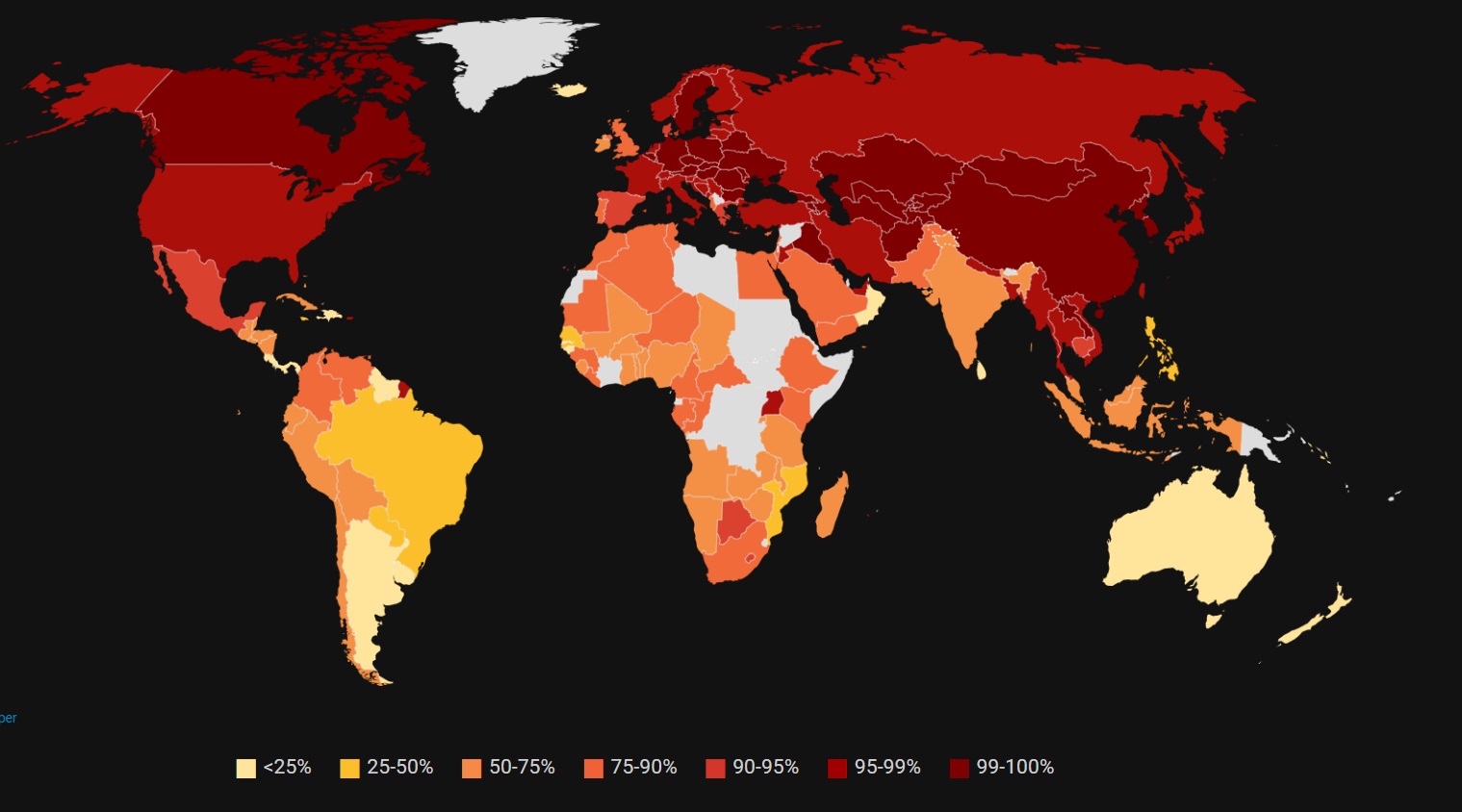Risks → War → Nuclear War → Effects of a Nuclear War
Yes, it really could be the end of the world as we know it!

Video still of a simulation developed to depict nuclear war between the United States and Russia
To run full simulation follow link.
Source: Princeton University See: https://www.princeton.edu/news/2019/09/09/princeton-project-build-diverse-coalition-physicists-confront-nuclear-dangers
Nuclear weapons are incredibly powerful and destructive. Their power is measured in 1,000's of tons on TNT (Kt's) and even millions of tons (Mt's). A
5 Mt nuclear warhead detonated over central London (air burst) for example, would result in 2.27 million immediate deaths and 3.64 million injuries. Severe to moderate blast damage
would extend up to 12 kilometres away from the centre of detonation, with thermal third degree burns present at up to 24.5 kilometres away.
In a nuclear war, hundreds. perhaps thousands of detonations would occur within minutes. In a regional nuclear war between India and Pakistan,
involving say 100 15 Kt warheads launched at urban areas would result in at least 27 million direct deaths. In an all-out global nuclear war between the
USA and Russia, with over 4,000 100 Kt warheads, would lead, at a minimum to 360 million immediate deaths! If France and the UK became involved (which is
probably inevitable) the immediate death toll would be even higher.
Consequential Effects
Unfortunately, this initial destruction would be only the beginning. There would be both immediate, medium term and longer term consequences of a nuclear war, leading to millions of further deaths. These consequential effects are summarised below:
Immediate - radioactive contamination and fallout, extensive and widespread fires and firestorms
Medium term - disease, collapse of emergency services, collapse of medical infrastructure, collapse of law and order, economic collapse,
collapse of Government, collapse of utilities, transport and communications infrastructure
Longer term - climate change, agricultural collapse (worldwide), famine
Consequential Effects - Discussion
Radioactive contamination and fallout may make areas unsafe to enter for many years. What is most frightening however, are the many fires/firestorms likely to result from
the initial nuclear holocaust. Fires would produce large quantities of soot, that would be thrust into the upper atmosphere (stratosphere), blocking out sunlight for
months and possibly years.
It has been estimated that a regional nuclear war between India and Pakistan (described above) would produce between 5 million tones or teragrams, Tg of soot to
over 47 Tg. A global nuclear war between the US and Russia could produce over 150 Tg of soot. Smoke lofted into the stratosphere would reduce the amount of solar radiation making it to Earth's surface, reducing global surface
temperatures by up to 8 degrees Celsius and reducing precipitation dramatically, ultimately leading to a "nuclear winter". Note, such a drop
would be 3 degrees lower than average Ice Age values. Simulations have also shown that a global nuclear war injecting 150 Tg of soot into the stratosphere would also
cause a 75% global ozone loss, with the depletion lasting 15 years, leading to vastly increased levels of dangerous ultraviolet radiation.
Changes in the atmosphere, surface, and oceans following a nuclear war will have massive and long-term consequences on global agricultural production
and food availability. Agriculture responds to the length of growing seasons, the temperature during the growing season, light levels, precipitation, and
other factors. A nuclear war will significantly alter all of those factors, on a global scale for years to decades.
Xia et al. (reference cited below) have produced data showing potential starvation/famine levels across the world given both a 5 Tg (REGIONAL nuclear war) and 150 Tg (GLOBAL nuclear war) injection of soot into the stratosphere. This data is summarised in the following images:

Worldwide REGIONAL nuclear war famine levels, 5 Tg soot injection
Source: Bulletin of the Atomic Scientists See: https://thebulletin.org/2022/10/nowhere-to-hide-how-a-nuclear-war-would-kill-you-and-almost-everyone-else/

Worldwide GLOBAL nuclear war famine levels, 150 Tg soot injection
Source: Bulletin of the Atomic Scientists See: https://thebulletin.org/2022/10/nowhere-to-hide-how-a-nuclear-war-would-kill-you-and-almost-everyone-else/